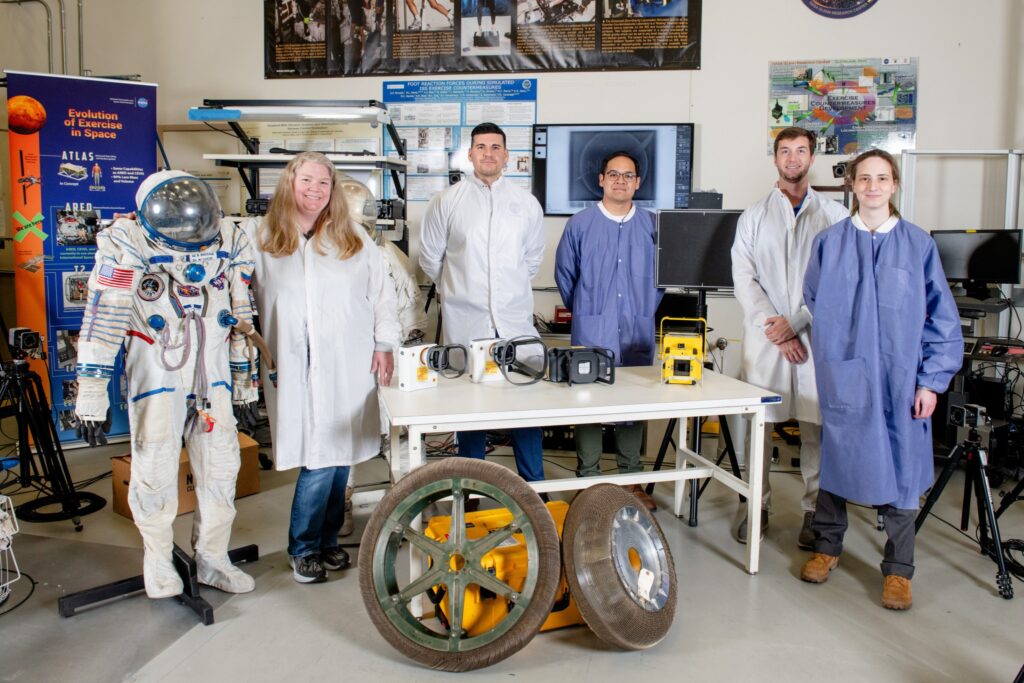
Researchers at NASA’s Glenn Research Center in Cleveland are pioneering a significant advancement in space health care by testing portable, handheld X-ray systems. This initiative, conducted by scientists Kelly Gilkey, Cy Peverill, Daniel Phan, Chase Haddix, and Ariel Tokarz, took place on Friday, March 21, 2025. The development is part of NASA’s broader strategy to enhance medical capabilities for future long-duration missions to the Moon, Mars, and beyond.
As NASA sets its sights on exploring deeper into space, it faces unique challenges such as communication delays and limited options for returning to Earth in emergencies. Consequently, having advanced medical tools like portable X-ray devices becomes critical. These systems would enable astronauts to diagnose medical conditions such as broken bones or dental injuries without invasive procedures.
Innovative Health Solutions for Space Exploration
The testing of these portable X-ray devices at NASA Glenn represents a crucial step forward in ensuring the health and safety of astronauts on extended missions. The ability to perform non-invasive imaging aboard spacecraft means that astronauts can quickly assess and treat potential injuries, as well as identify equipment issues without the need for disassembly.
“Technological innovations like that of the mini-X-ray will help keep our astronauts healthy as we endeavor farther into space than ever before,” stated acting NASA Administrator Sean Duffy. “Future missions to the Moon and Mars will be safer due to the research of our scientists at NASA Glenn.”
The Importance of Portable X-Ray Technology
The introduction of portable X-ray technology in space missions is not just a convenience but a necessity. In the confines of a spacecraft, where medical emergencies must be handled swiftly and effectively, having the ability to conduct immediate diagnostic imaging can be life-saving. This technology also reduces the need for astronauts to return to Earth for medical evaluations, thus saving time and resources.
“By enabling immediate assessments, portable X-ray systems can drastically reduce the risks associated with delayed medical care in space,” said Dr. Emily Carter, a space medicine expert.
Historical Context and Future Implications
The concept of using X-ray technology in space is not entirely new. Historically, NASA has prioritized astronaut health, but the current focus on miniaturized, portable systems marks a significant evolution. Previous missions relied on Earth-based support for medical imaging, which is not feasible for future missions to distant locations like Mars.
Furthermore, the development of such technology is likely to have implications beyond space exploration. Portable X-ray devices could revolutionize medical care in remote or underserved areas on Earth, where traditional imaging equipment is unavailable.
Looking Ahead: The Path to Mars and Beyond
The successful implementation of portable X-ray systems is a critical component of NASA’s Artemis program, which aims to return humans to the Moon and lay the groundwork for human exploration of Mars. As part of this program, ensuring the health and safety of astronauts is paramount.
According to NASA’s plans, the continued testing and refinement of these devices will play a vital role in mission planning and execution. The advancements made at NASA Glenn are expected to contribute significantly to the overall success of future space missions.
“The development of portable X-ray technology is a testament to NASA’s commitment to innovation and safety,” remarked Dr. John Smith, a senior aerospace engineer. “As we prepare for the next era of space exploration, these technologies will be indispensable.”
As NASA continues to push the boundaries of human exploration, the integration of cutting-edge medical technologies will ensure that astronauts are well-equipped to face the challenges of space travel. The ongoing research at NASA Glenn is a promising step towards a future where space missions are not only possible but also safer and more sustainable.







